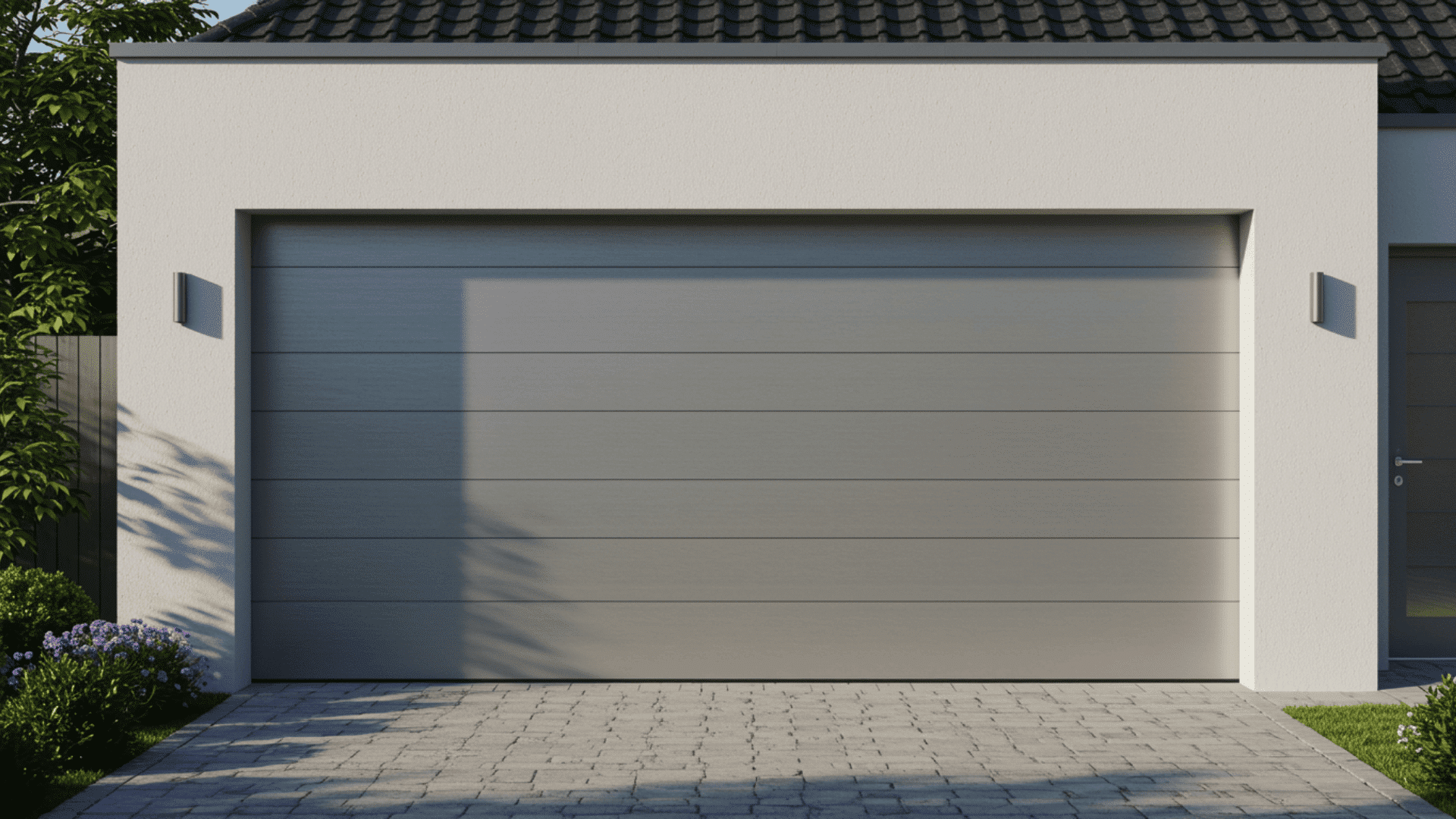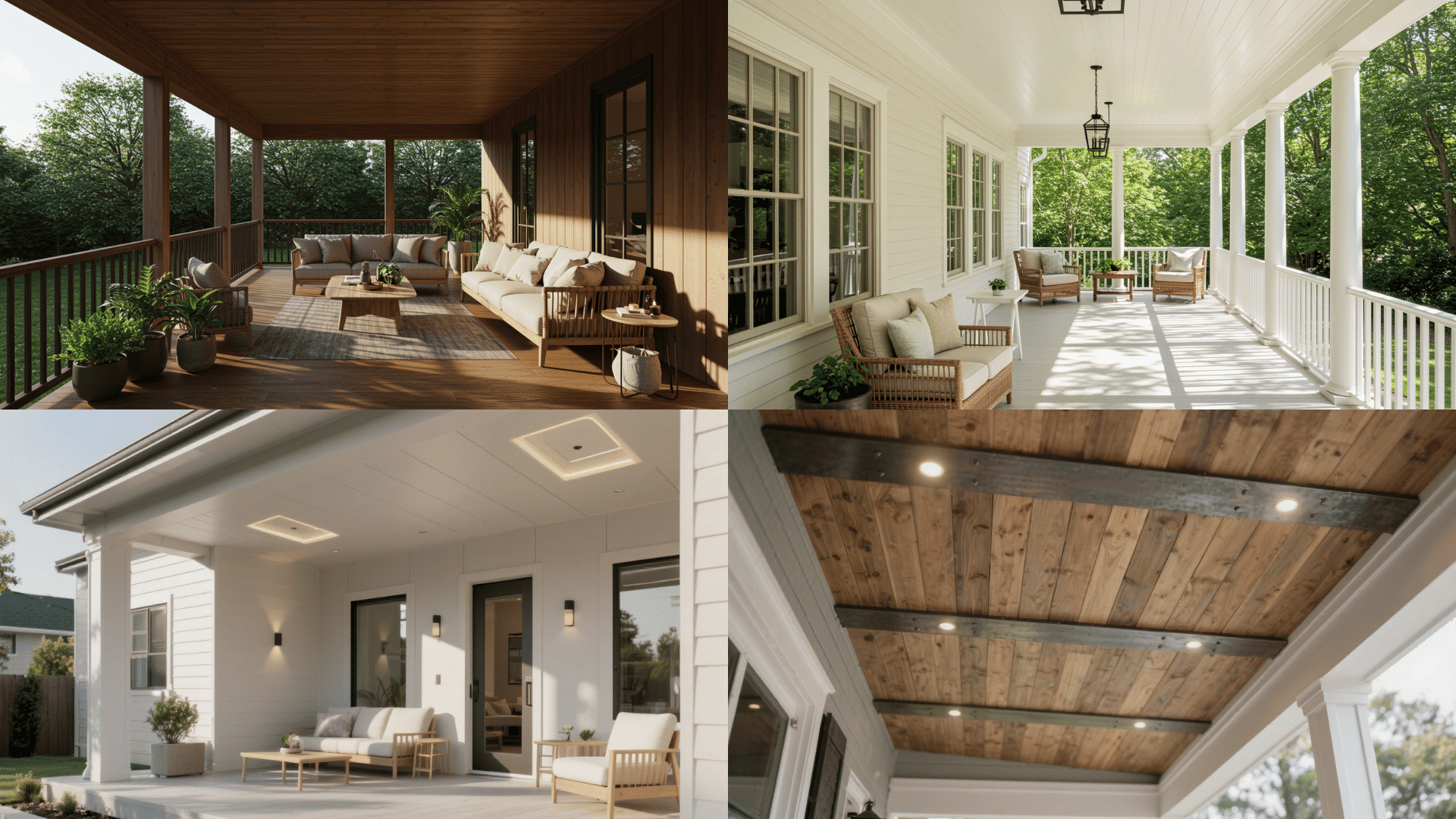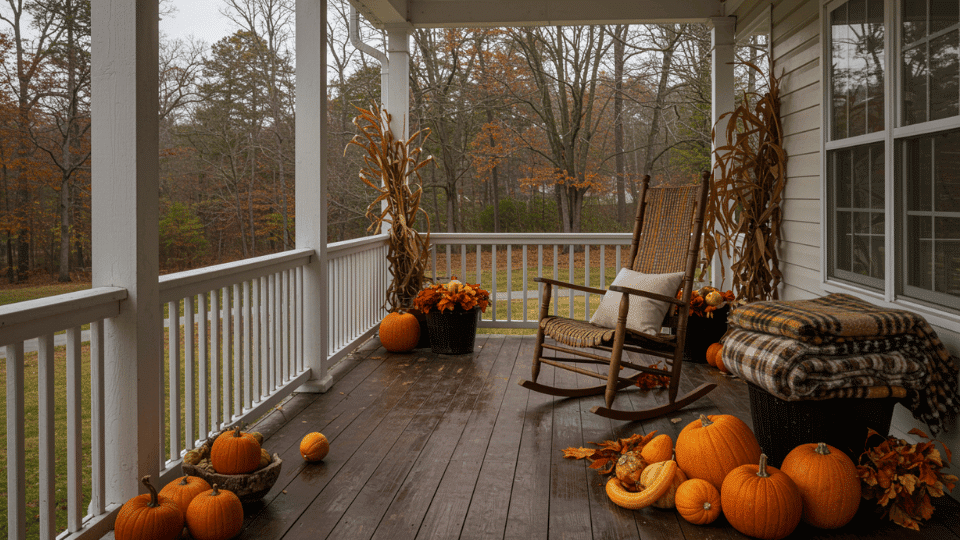Garage door choice affects more than you might think. Different styles work in surprisingly different ways. Some save space that isn’t obvious at first.
Your decision directly impacts the security, access, and daily operation of your home.
I’ve noticed that most owners don’t consider all their options before making a decision. The door type that seems perfect at first might not meet your actual needs.
Understanding the differences helps you avoid common mistakes and find what actually works for your space.
How to Choose the Right Garage Door Type?
Picking the right garage door isn’t just about looks. You need to think about your budget, home style, and daily needs. We’ve narrowed down the key factors that matter most. Here’s what you should consider:
- Budget: Set a realistic price range before you start shopping, and remember installation costs add up, too.
- Home Style: Match your door to your home’s architecture so it uplifts curb appeal rather than clashing with it.
- Insulation Needs: Consider climate and energy costs, especially if your garage shares walls with living spaces.
- Maintenance Level: Choose low-maintenance materials if you’re busy and don’t want constant upkeep.
- Security Features: Look for sturdy materials and good locks that keep your home safe from break-ins.
- Space Requirements: Measure your garage opening and ceiling height to ensure proper fit and operation.
Take your time comparing different types of garage doors to find the one that truly fits your needs. Your perfect match exists once you understand each option.
Find the Right Garage Door Size for Your Space
Wondering if your garage door will actually fit? Getting the measurements right the first time saves you from expensive mistakes and installation headaches.
| FEATURE | SINGLE GARAGE DOOR | DOUBLE GARAGE DOOR |
|---|---|---|
| Width | 8-10 feet | 12-18 feet |
| Height | 7-8 feet | 7-8 feet |
| Best For | One car, smaller driveways | Two cars, wider spaces |
| Cost | Lower | Higher |
| Curb Appeal | Traditional, compact look | Modern, spacious appearance |
Types of Garage Door
Now we’re getting to the heart of it. There are several different types of garage doors, each with unique features and benefits.
Understanding these options helps you make the right choice for your home. Let’s walk through the most popular styles and what makes each one special:
1. Sectional Garage Doors

Sectional doors are the most common choice for modern homes. They’re made of panel sections connected with hinges. When you open them, the sections roll up and overhead on tracks.
- Pros: Space-saving, excellent insulation, wide style variety
- Cons: Higher upfront cost, professional installation needed
- Price Range: $800-$4,000
- Materials: Steel, aluminum, wood, composite
2. Roll-Up Garage Doors
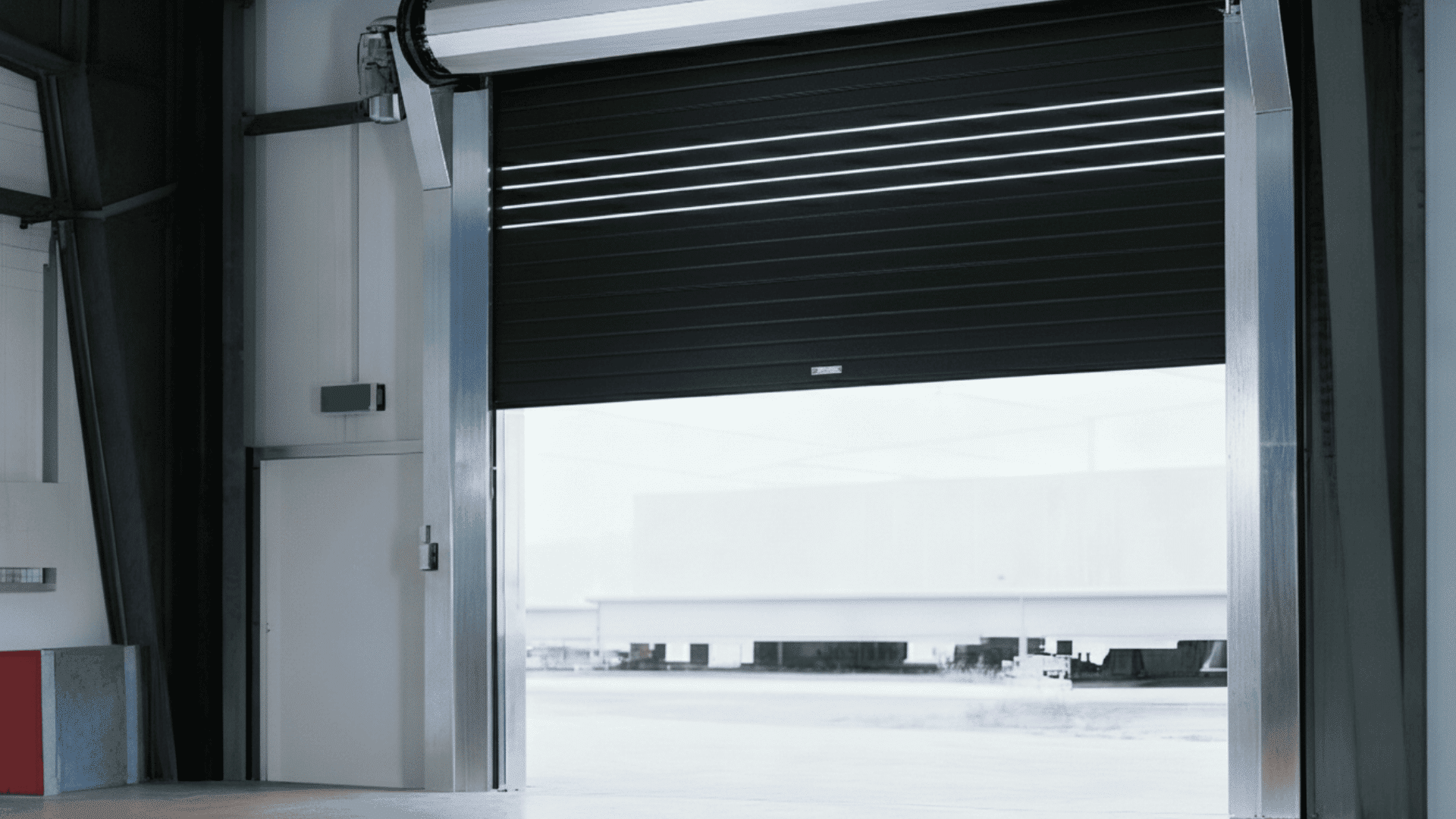
Roll-up doors work like a rolling shutter. They coil around a drum above the opening. These are popular for commercial spaces but work well in residential garages too.
- Pros: Maximum space efficiency, durable, low maintenance
- Cons: Limited insulation, noisy operation, fewer design options
- Price Range: $500-$2,500
- Materials: Steel, aluminum
3. Tilt-Up Canopy Garage Door

The canopy style tilts up and stores partially inside your garage. The bottom third stays outside, creating a canopy effect. It’s a budget-friendly single-panel option.
- Pros: Affordable, simple operation, easy repairs
- Cons: Protrudes when open, takes driveway space, limited automation
- Price Range: $500-$1,500
- Materials: Wood, steel
4. Tilt-Up Retractable Garage Door

Retractable tilt-ups work similarly but store completely inside your garage. The entire door panel slides back along the ceiling. This gives you full driveway clearance when open.
- Pros: Complete interior storage, sturdy build, more secure than canopy
- Cons: Needs ceiling space, harder to automate, fewer styles
- Price Range: $800-$2,200
- Materials: Wood, steel, fiberglass
5. Side-Hinged Garage Doors

These traditional doors swing open from a hinged frame on either side. They look like large barn doors and give your home a classic feel.
- Pros: Easy manual operation, charming appearance, pedestrian-friendly access
- Cons: Requires driveway clearance space, less security than modern options
- Price Range: $1,000-$3,500
- Materials: Wood, steel, fiberglass
6. Slide to the Side Garage Doors
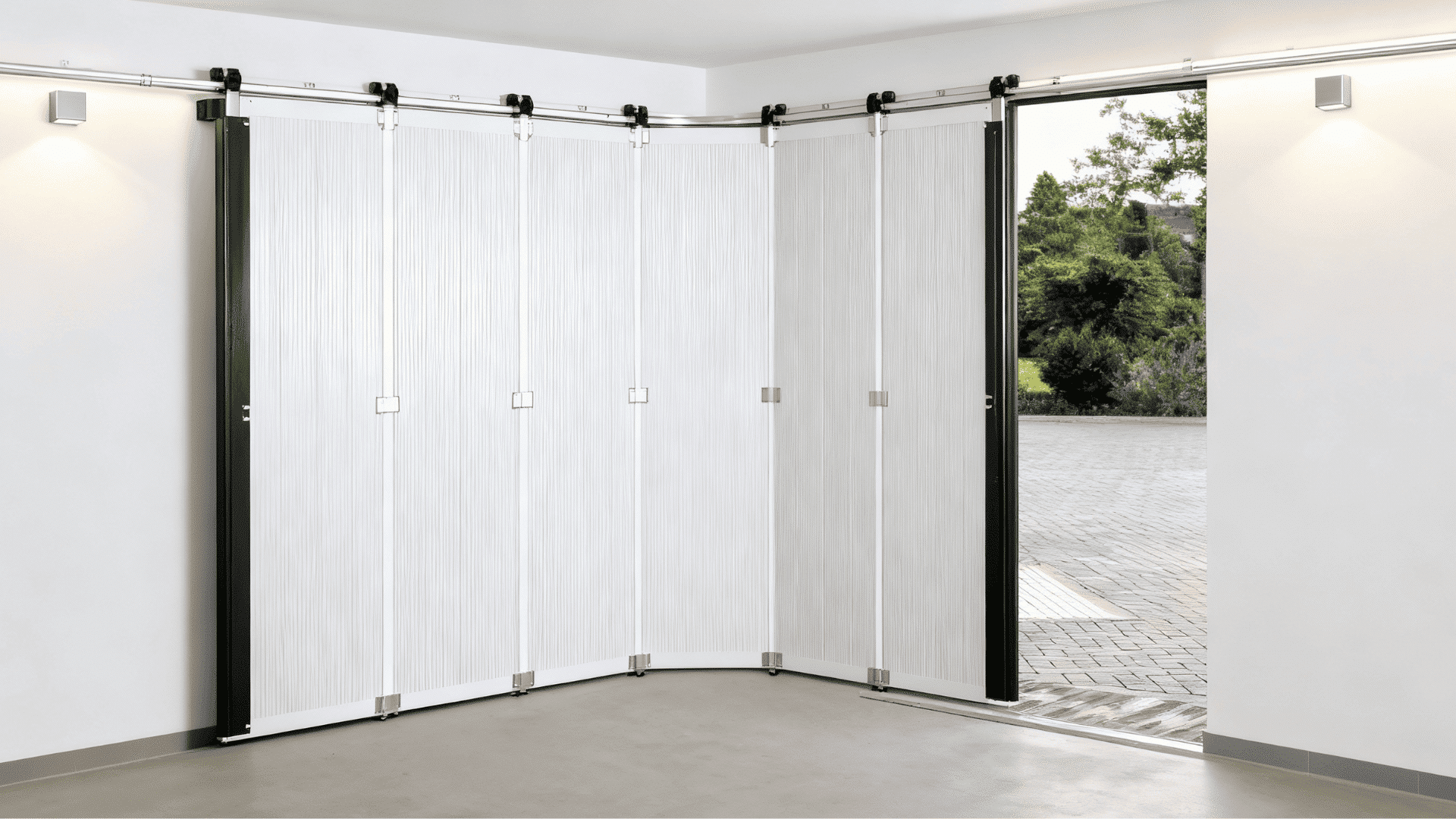
Slide-to-side doors bend and move horizontally along your garage wall. One section slides behind the other when opening. They’re less common but offer unique benefits.
- Pros: No ceiling track needed, works with low ceilings
- Cons: Needs wall space, limited style choices
- Price Range: $1,200-$3,800
- Materials: Wood, steel
7. Carriage-Style Garage Doors

Carriage doors mimic the look of old carriage house doors. They can swing open or roll up like sectional doors. These add instant charm and boost your home’s curb appeal.
- Pros: Beautiful aesthetic, increases home value, customizable designs
- Cons: Higher cost, may need more maintenance
- Price Range: $1,500-$5,000
- Materials: Wood, steel with wood overlay, composite
8. Bi-Fold Garage Door

Bi-fold doors fold up in sections as they open. They use hinged panels that fold in the middle. This creates a unique opening pattern that saves overhead space.
- Pros: Maximizes ceiling space, modern look, smooth operation
- Cons: Expensive, complex mechanism, limited availability
- Price Range: $2,000-$6,000
- Materials: Aluminum, steel, glass
9. High-Speed Garage Door

High-speed doors open and close rapidly, usually in seconds. They’re designed for commercial use but work well for busy residential garages. These doors prioritize efficiency and convenience.
- Pros: Fast operation, energy efficient, reduces wait time
- Cons: Very expensive, overkill for most homes, professional maintenance required
- Price Range: $3,000-$10,000
- Materials: Steel, aluminum, PVC fabric
Each type caters to different budgets and spaces. Visit showrooms to see and compare options directly, making your decision easier.
Different Garage Door Materials
Choosing the right garage door material affects durability, maintenance needs, and your home’s curb appeal. Here’s a breakdown of the most popular options.
| MATERIAL | DURABILITY | MAINTENANCE | INSULATION | COST RANGE | BEST FOR |
|---|---|---|---|---|---|
| Steel | Excellent, dent-resistant | Low, occasional repainting | Good with insulation layer | $800-$4,000 | Most homes, high security |
| Aluminum | Good, lightweight, rust-proof | Very low | Poor without added insulation | $600-$2,500 | Modern homes, coastal areas |
| Wood | Good, can warp over time | High, needs regular sealing | Excellent natural insulation | $1,500-$5,000 | Traditional homes, curb appeal |
| Fiberglass | Fair, can crack in cold | Low, easy to clean | Poor | $900-$3,000 | Beach homes, salt air exposure |
| Composite/Vinyl | Very good, weather-resistant | Very low, no painting | Moderate | $1,000-$4,500 | Low-maintenance seekers |
Popular Garage Door Features and Options
Modern garage doors offer features that enhance safety and convenience. Besides various types, you can add popular extras. Here’s what to consider.
- Automatic Openers: Remote-controlled operation for hands-free convenience and quick access
- Smart Technology: Connect to your phone for monitoring and control from anywhere
- Windows: Add natural light and uplift curb appeal with decorative glass panels
- Insulation Upgrades: Improve energy efficiency and reduce heating and cooling costs significantly
- Security Features: Includes rolling code technology and tamper-resistant brackets for peace of mind
- Custom Paint/Stain: Match your home’s exterior perfectly with personalized color options
These features can change a basic garage door into something special. You don’t need every option, but picking the right ones makes daily life smoother. We suggest prioritizing smart openers and insulation for the best value.
Garage Door Maintenance Tips
All garage doors require regular maintenance to ensure smooth operation and longevity, preventing costly repairs. Many realize its importance only when problems occur, but a few minutes of upkeep can extend its lifespan.
- Apply garage door lubricant to rollers, hinges, and tracks twice yearly to reduce friction and prevent wear that causes squeaking and grinding noises
- Check auto-reverse sensors monthly by placing an object in the door’s path to ensure they respond properly and keep your family safe
- Inspect and tighten loose bolts and screws every few months because vibration from daily use can loosen hardware and affect door performance
- Remove dirt and debris from tracks with a damp cloth regularly to prevent buildup that can cause your door to stick or operate unevenly
- Replace worn weatherstripping around the door edges to keep out drafts, moisture, and pests while improving your garage’s energy efficiency
A few minutes of seasonal maintenance prevent big issues later. Check when you change clocks, and fix small noises early to avoid costly repairs.
Conclusion
Choosing the right garage door type comes down to your specific needs, budget, and home style. Each option offers distinct advantages in functionality, space efficiency, and aesthetic appeal.
I recommend evaluating your garage dimensions, insulation requirements, and maintenance preferences before making a decision.
Your garage door impacts security, convenience, and style. Compare options and consult a pro for durable, easy-to-use choices within budget.

